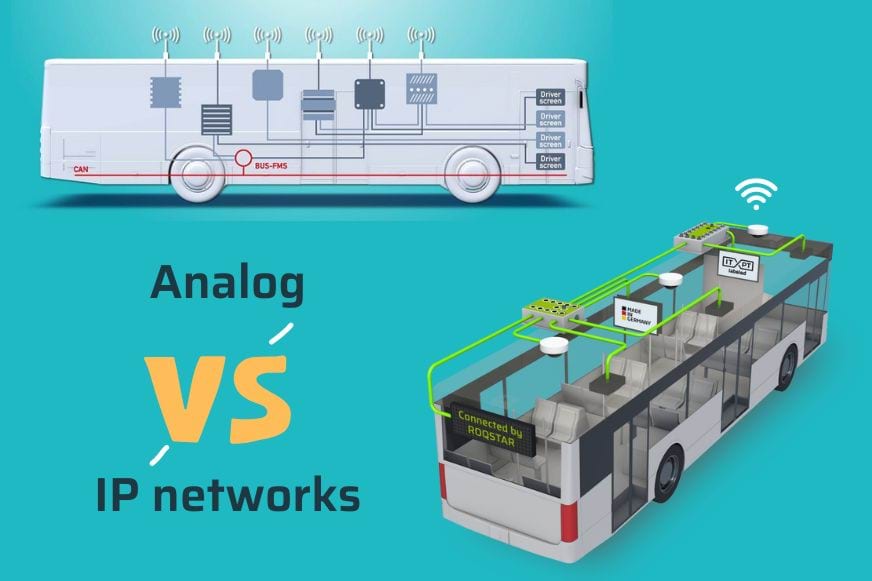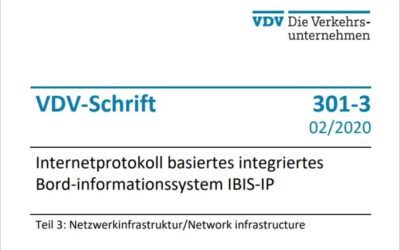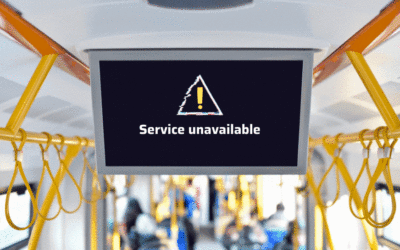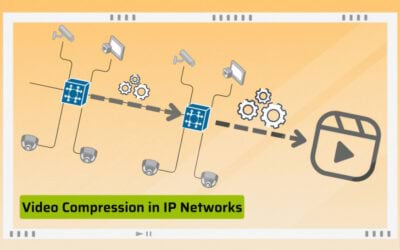The Right Decision: How Do You Know It’s Time to Switch to IP Communication in Public Transport?
Replacing analog technology in buses and trains with IP networks? This is a question that is currently occupying the minds of many public transport operators. We explain when is the best time to make the switch and what requirements must be met on site.

Content
Many transport companies still rely on tried-and-tested analog technology. It has been in use for many years and is characterized in particular by reliability and ease of use. However, it is also clear that with increasing requirements for live information, passenger safety and effective operation, the switch to digital, IP-based communication is inevitable.
IP communications offer a reliable and flexible communications solution in public transport, allowing a wide range of devices and systems to be interconnected. This facilitates the transmission of information, such as timetable data and location information, improving operational efficiency and safety. IP communications also enable the integration of various systems, such as video surveillance, passenger counting, dynamic passenger information and advanced payment systems, helping to improve passenger comfort.
The Clock is Ticking: When is the Best Time to Introduce IP-Based Systems?
A switch from analog to IP-based systems makes sense for transit operators when existing technology is no longer sufficient to meet the increasing demands on vehicle communications. This may involve the transmission of larger data volumes, the integration of new systems or compliance with new safety standards.
Furthermore, a changeover may make sense if the costs for maintenance and servicing of the existing technology become too high. A shortage of personnel is also possible, as the present and future belong to professions in IT and digital technology.
It should be noted, however, that a switch to IP communications usually involves a large investment and requires careful planning and implementation. Transport companies should therefore carefully weigh up the benefits and risks and, if necessary, carry out a comprehensive cost-benefit analysis before making the decision.
An Analysis: Prerequisites for a Successful Changeover
The changeover depends on several factors, such as requirements for transmitting data and information, available funding and resources, existing technologies and systems, and the future plans of the operator.
It should be noted, however, that IP-based systems are often scalable and can be expanded based on the needs of the operator. Especially if industry standards such as ITxPT are used as a basis.
First and foremost, a company’s own requirements should be thoroughly analyzed in order to make an informed decision based on the specific needs and goals of the operation.
When analyzing whether a switch to IP-based systems in public transport makes sense and is truly beneficial, the following points in particular should be considered:
1. Data transmission requirements: How important is reliable and efficient transmission of data, especially real-time data, such as passenger information, monitoring data, passenger numbers?
2. Available funds and resources: Does the operation have the necessary financial and technical resources to make the switch to IP-based systems?
3. Existing technologies and systems: How well do existing technologies and systems integrate with an IP-based network?
4. Expertise: Are experts available who can plan, implement, and monitor the transition to IP communications?
5. Training and support: Can sufficient training of staff be ensured so that they can handle the new systems and act effectively when problems arise?
6. Future plans for operations: How do plans for future operations fit with a transition to IP-based systems, especially in terms of potential enhancements and customizations?
7. Passenger needs and requirements: How important are modern technologies and information services to passengers, for example, in terms of trip planning and vehicle utilization?
8. Comprehensive planning: It is important to plan the changeover to IP communications thoroughly and to consider all relevant aspects, such as data security and operational reliability.
Conclusion: All in Good Time – Everyone Must Find Their Pace
IP-based systems are already in use in many public transport companies today. Given the benefits of effective public transport vehicle operation combined with greater passenger comfort, a switch from analog systems is only a matter of time. In addition to an analysis, an implementation plan is one of the most important ingredients for success.
The basis for this is a robust and reliable network infrastructure in vehicles. Find out how to plan and implement a network architecture in buses and trams in the following articles:
>> The IP Network: The Basis for the Digitalized Public Transport Bus in 7 Steps
>> The Perfect Network Design in Trams – A Guide for Beginners and Advanced Users
Outlook: 5 Reasons to Switch to IP-Based Systems
1. Better integration opportunities: IP-based systems offer better integration with other transit systems and applications, such as passenger information, monitoring, and diagnostics.
2. Higher data transmission speed: IP-based systems enable higher data transmission speed, which provides more efficient transmission of data and faster response to problems.
3. Future-proofing: IP-based systems are more future-proof and can be easily adapted to new technologies, which is an advantage for transit agencies that want to maintain their systems over the long term.
4. Flexibility: IP-based systems offer greater flexibility and allow easier adaptation to changing requirements and needs.
5. Network management: Ethernet switches enable easy management of the network, as they can handle monitoring of network activity, fault diagnosis and configuration.
More Stories Like This:
What Role Does the Network Play for the IBIS-IP / VDV 301 Standard?
Digitalization in the transportation sector requires the transfer of ever-increasing amounts of data, pushing the existing serial communication to its limits. As an IP-based data transmission solution, IBIS-IP provides an efficient alternative.The...
Preventing System Failures in Public Transport Vehicles: Role of Ethernet Switches
In digitalized buses and trains, data is of enormous importance for both transport operators and passengers. Therefore, system failures in public transportation require special attention. Network switches act as unsung heroes here, preventing or...
IP Cameras and Network Topology Design: Optimizing Compression for Efficient Data Handling
IP cameras are widely used in public transport vehicles, enhancing onboard safety and security. ROQSTAR Ethernet switches seamlessly integrate with these cameras, ensuring optimal functionality and data transmission. However, IP cameras contribute...











